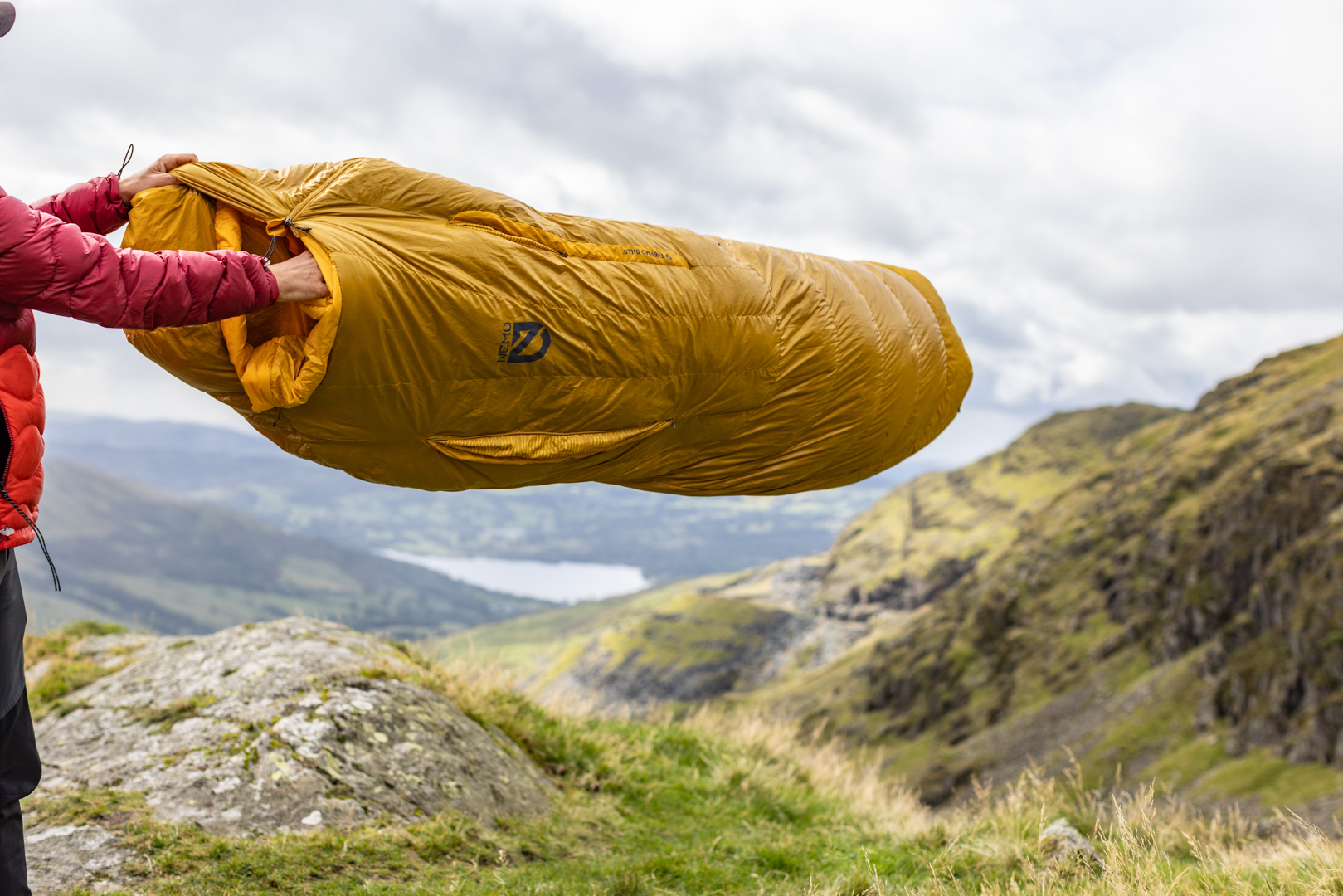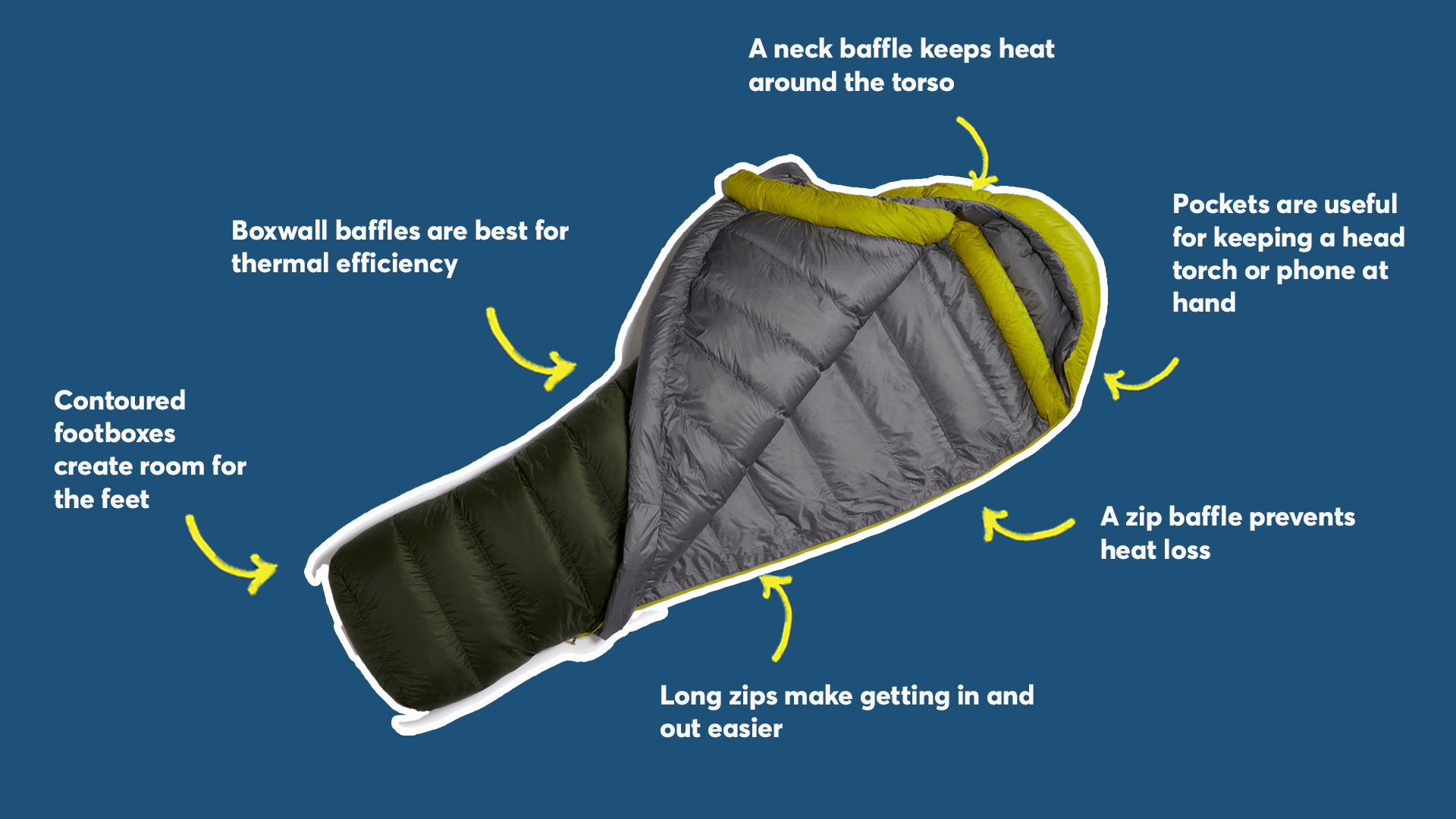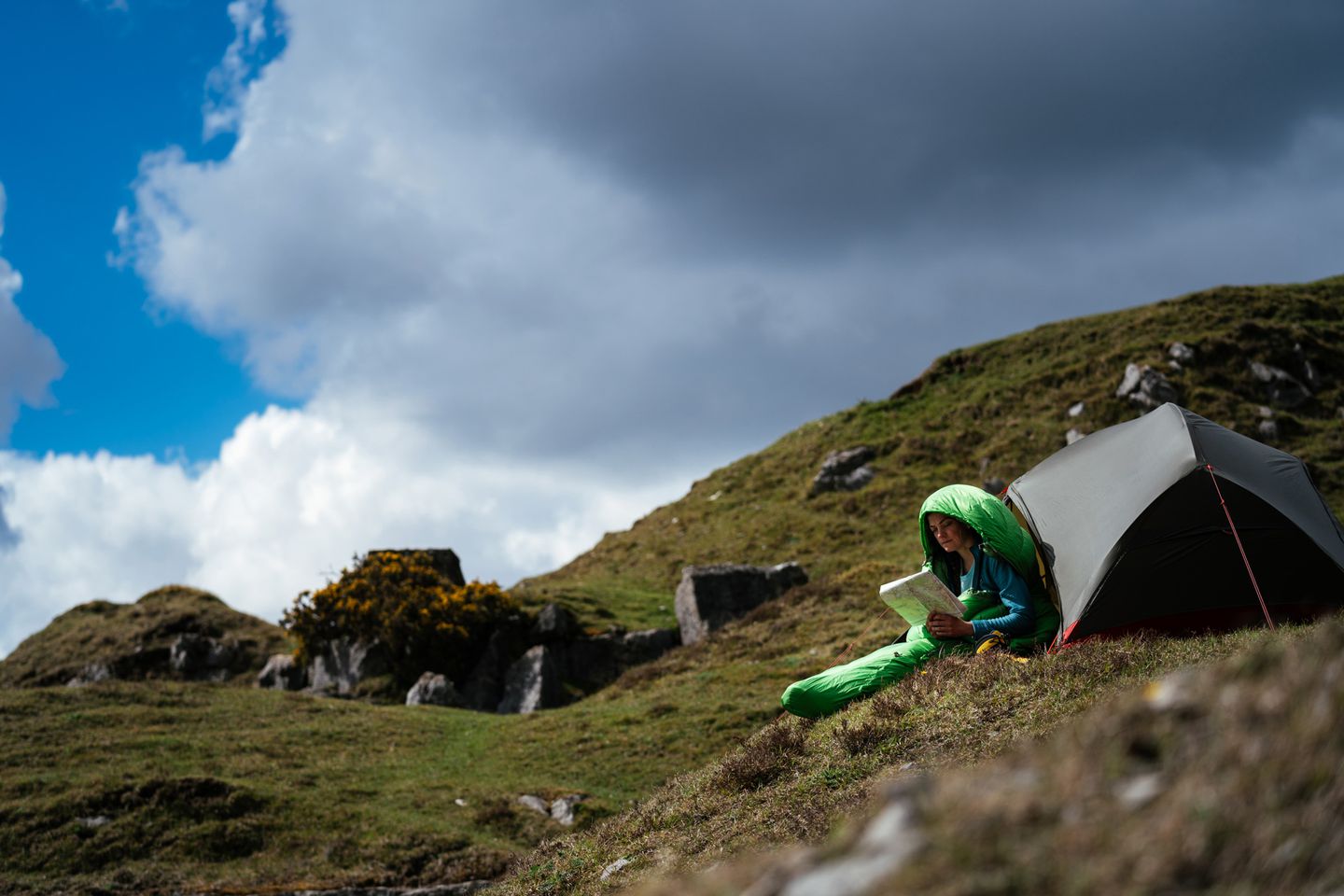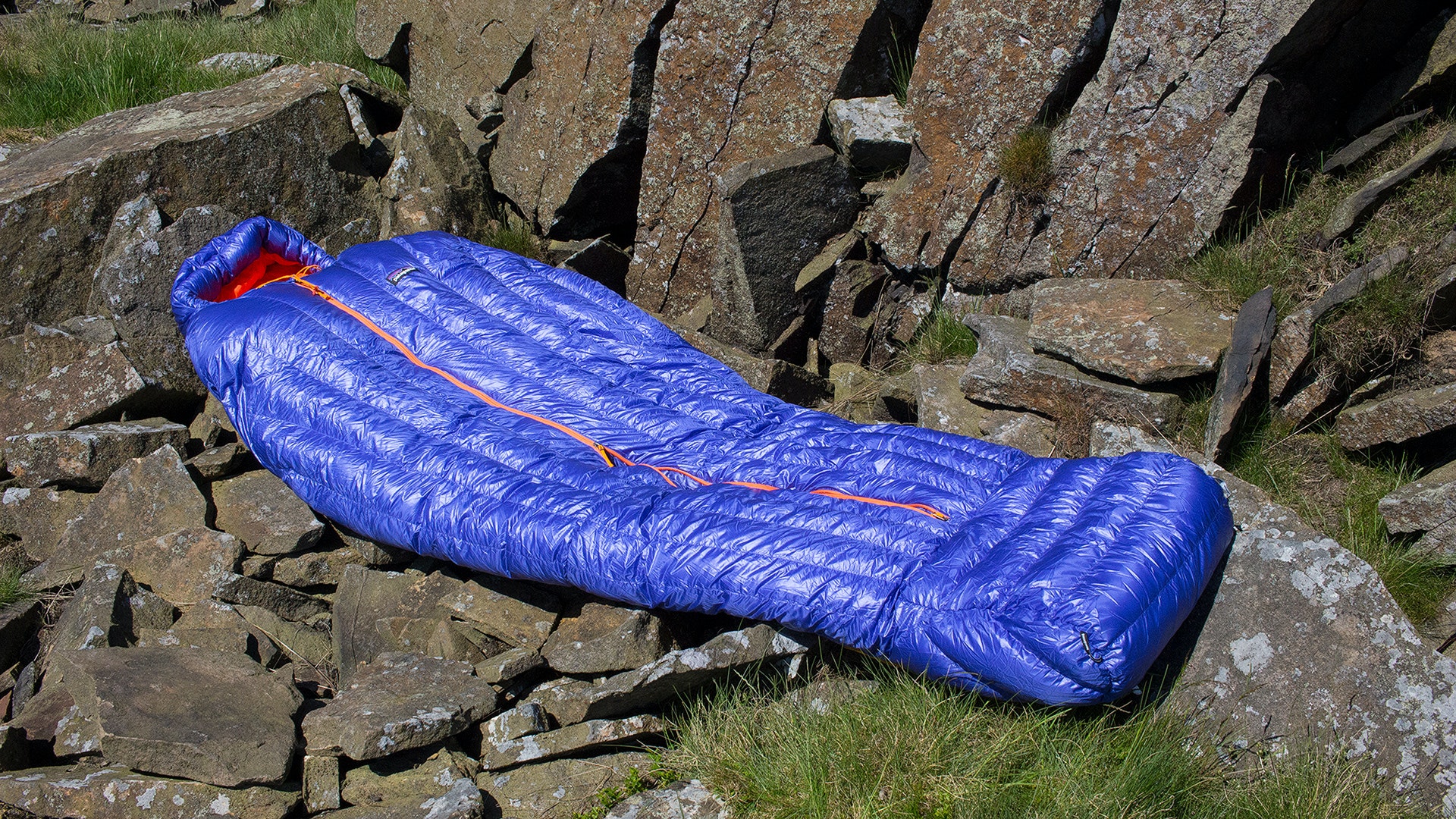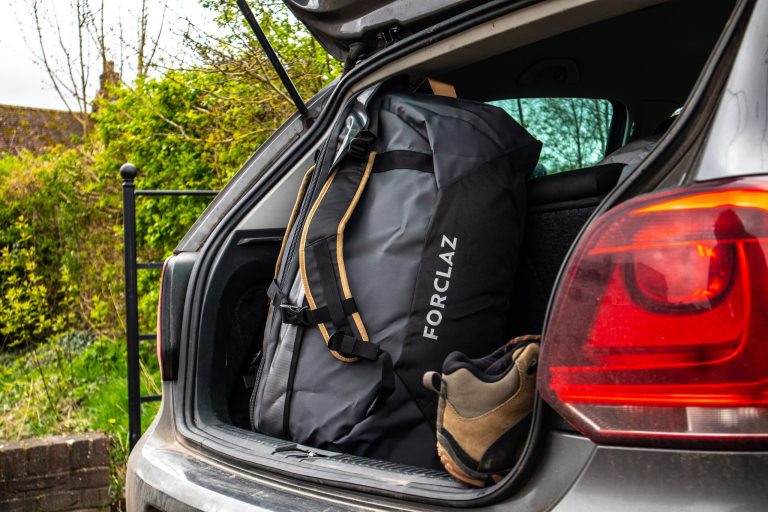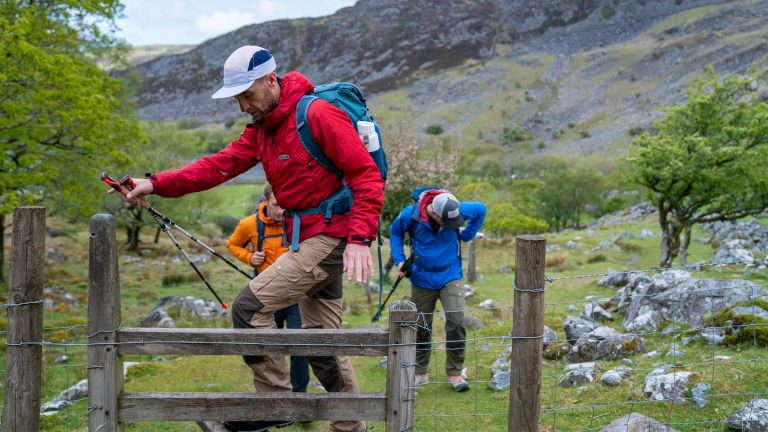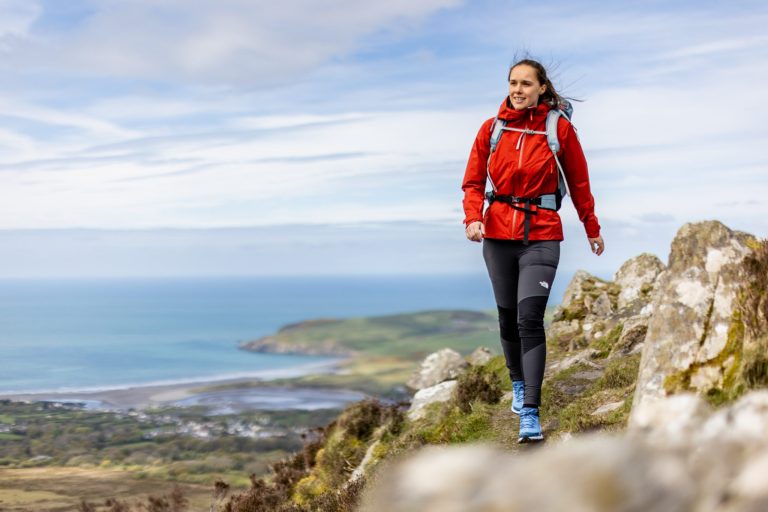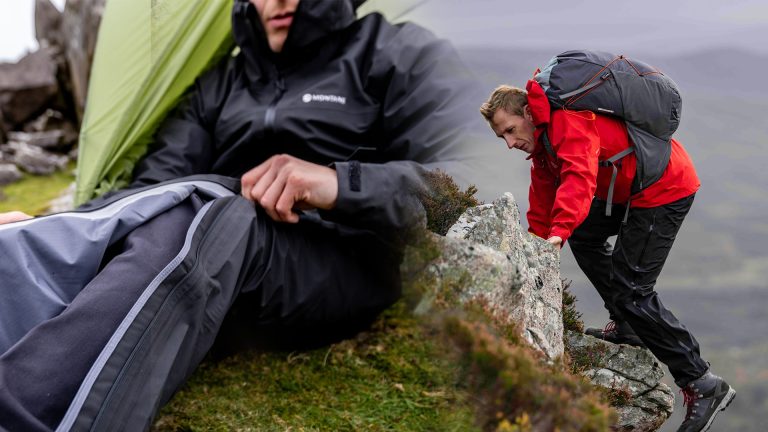The best three-season sleeping bags are essential bits of kit for spring, summer and autumn nights in the great outdoors. Choosing the right bag will help guarantee that you stay warm while camping. Plus, unzipping your tent to enjoy an epic view from the warmth of a cosy sleeping bag is one of life’s great pleasures.
But buying one can be a bewildering task. To help you pick the right sleeping bag, think about when and how you’ll use it. Will you be backpacking or car camping? And do you need a bag for warm summer nights, or cooler spring and autumn seasons? Also consider how your sleeping bag works with your pack, tent and sleeping mat. This guide will help you find the best three-season sleeping bag for your needs, with versatile options for different weather conditions.
If you’re on a budget, check out our recommendations for the best budget sleeping bags. For a broader range of options, visit our full guide to the best sleeping bags.
The Best Three-Season Sleeping Bags of 2025
The sleeping bags in this round-up are primarily intended for three-season use; that is, for hiking, backpacking and camping in spring, summer and autumn. They range from lightweight down bags – ideal for fastpacking – to bulkier, synthetic options that are better suited to trips where weight and packed size aren’t so important.
-
Best Overall Three-Season Sleeping Bag: Rab Alpine 800
-
Best Lightweight Three-Season Sleeping Bag: Montbell Seamless Down Hugger
-
Best Synthetic Three-Season Sleeping Bag: Snugpak Softie 6
-
Best Value Three-Season Sleeping Bag: Kelty Cosmic Down 20
-
Best Sustainably-Made Three-Season Sleeping Bag: Nemo Forte 20
The Expert
I’m Will, I’m the editor of this site and I’ve been reviewing outdoor gear on a professional basis for well over a decade now. In that time, I’ve served on all of the major outdoor industry juries and I’ve hiked and run thousands of miles. Whether I’m long distance walking or trail running, most of my outdoor adventures involve wild camping. There was the time, for instance, when I spent 63 days straight wild camping around the perimeter of Wales. I also spent 23 nights fastpacking over all 189 of Wales’s mountains.
How We Tested Them
I was responsible for testing all of the sleeping bags in this round-up and I also tested countless others that didn’t make the cut. I’m 5 foot 10, have an average build and I’d say that I’m a neutral sleeper – I don’t sleep overly hot or cold. All of these bags were used in conditions between spring and autumn. As a backpacker, the warmth-to-weight ratio was a big factor in my assessment of each sleeping bag. Also, I spend a lot of time in wet conditions, so I looked for sleeping bags that can handle a bit of moisture too.
1. Rab Alpine 800
Picked as the best overall three-season sleeping bag in our tests
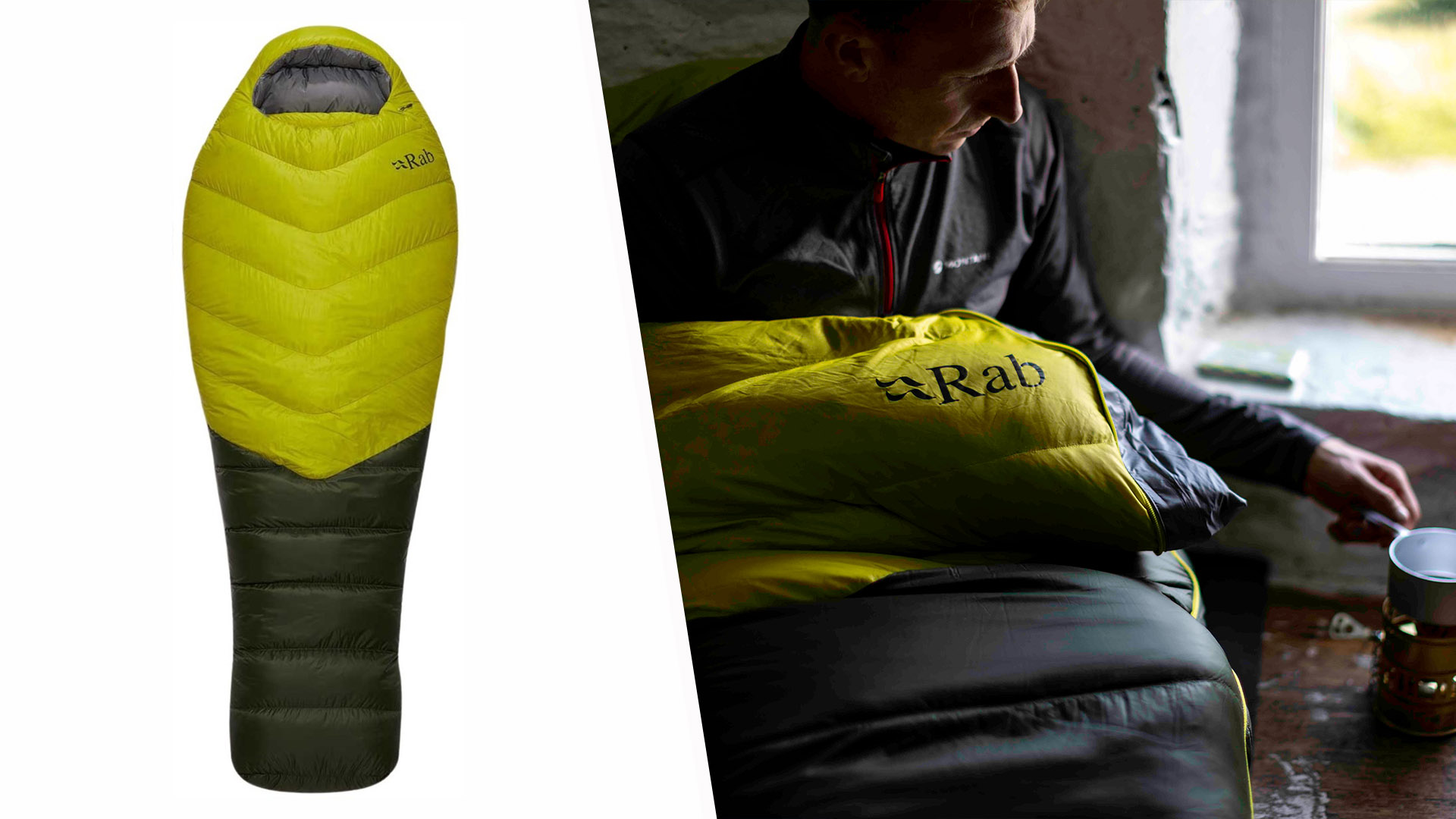
Price: £330
Weight: 1260g
Key attributes: Good warmth-to-weight, lofty fill
Temperature rating: comfort limit: -16C
Length: 215 or 230cm
Fill type: down
During our tests with this sleeping bag we were impressed by the loftiness of its 650 fill power fill and the cosy warmth inside it. We used it on a frosty trip in the Cairngorms and it was a reliably comfortable cocoon.
Rab have used some quality materials and ingredients here, including European down that’s treated with Nikwax, a durable but lightweight Pertex Quantum outer shell fabric that’s made from 100% recycled materials and, finally, YKK zips.
The main two-way zip was handy for regulating the temperature inside the bag and the zipped pocket at the hood was useful for keeping a head torch or your phone close at hand. The only downside to this sleeping bag is its stuff sack which is a little on the basic side with no compression straps to let you really reduce the packed size.
Full Specifications
Available in different sizes and temperature ratings / sleep limit: -16C / Lengths: 85 inches or 90 inch / fill: 800g 650 fill power European duck down / Nikwax hydrophobic treatment / shell: 20D Pertex Quantum / liner: 20D recycled nylon.
Check out our full Rab Alpine Pro 600 review.
Buy the Rab Alpine 800: £330 at Rab.equipment
2. Kelty Cosmic Down 20 Bag
Our top pick if you’re looking for value
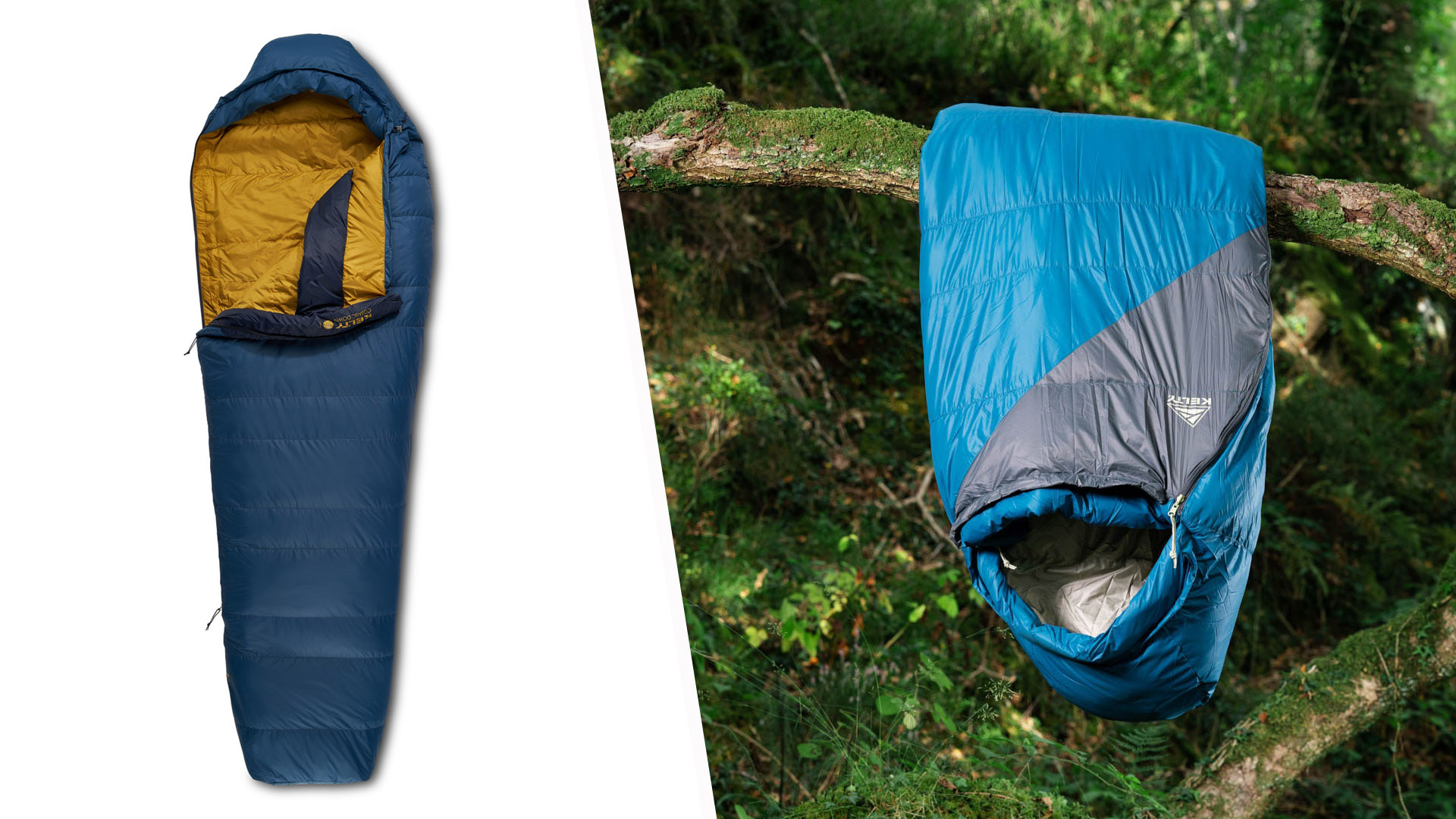
Price: £130
Weight: 1.19kg
Key attributes: Excellent value, responsibly-sourced down and PFC-free fabrics
Temperature rating: comfort rating: 0C / comfort limit: -6C
Fill type: down
We really like this sleeping bag here at Outdoors Magic. Using it, you wouldn’t think it’s a sub £200 bag as it has the comfort, loftiness and light weight design of a much more expensive model. OK, the down fill isn’t the most thermally efficient (it’s rated at 550 fill power) but it still brings enough warmth for general three-season use. It might just get tested on any very cold nights at the start of spring or late on in autumn.
Unlike most low-cost rivals, its cosy down is exclusively sourced from Allied Feather + Down, which is an RDS (Responsible Down Standard) certified supplier. The bag’s shell fabrics additionally only use environmental and health-friendly PFC-free durable water repellent (DWR) treatments.
All in all, this is a great value bag with some decent eco credentials.
Full Specifications
ISO comfort rating of 0°C with lower limit of -6°C (Cosmic 20) / 550 RDS fill power duck down / fully traceable down / 20-denier, PFC-free nylon taffeta shell / pack size: 20 x 33cm / larger options available / trapezoidal baffle construction / cosy hood / roomy footbox / anti-snag two-way zipper design / internal stash pocket / lofty draught collar and zipper draft tube.
Selected for our Greener Gear Guide – Here’s our full Kelty Cosmic Down Sleeping Bag review.
Buy the Kelty Comsic Down 20: £130 at Absolute-snow.co.uk
3. NEMO Forte 20
Best for the eco-conscious camper
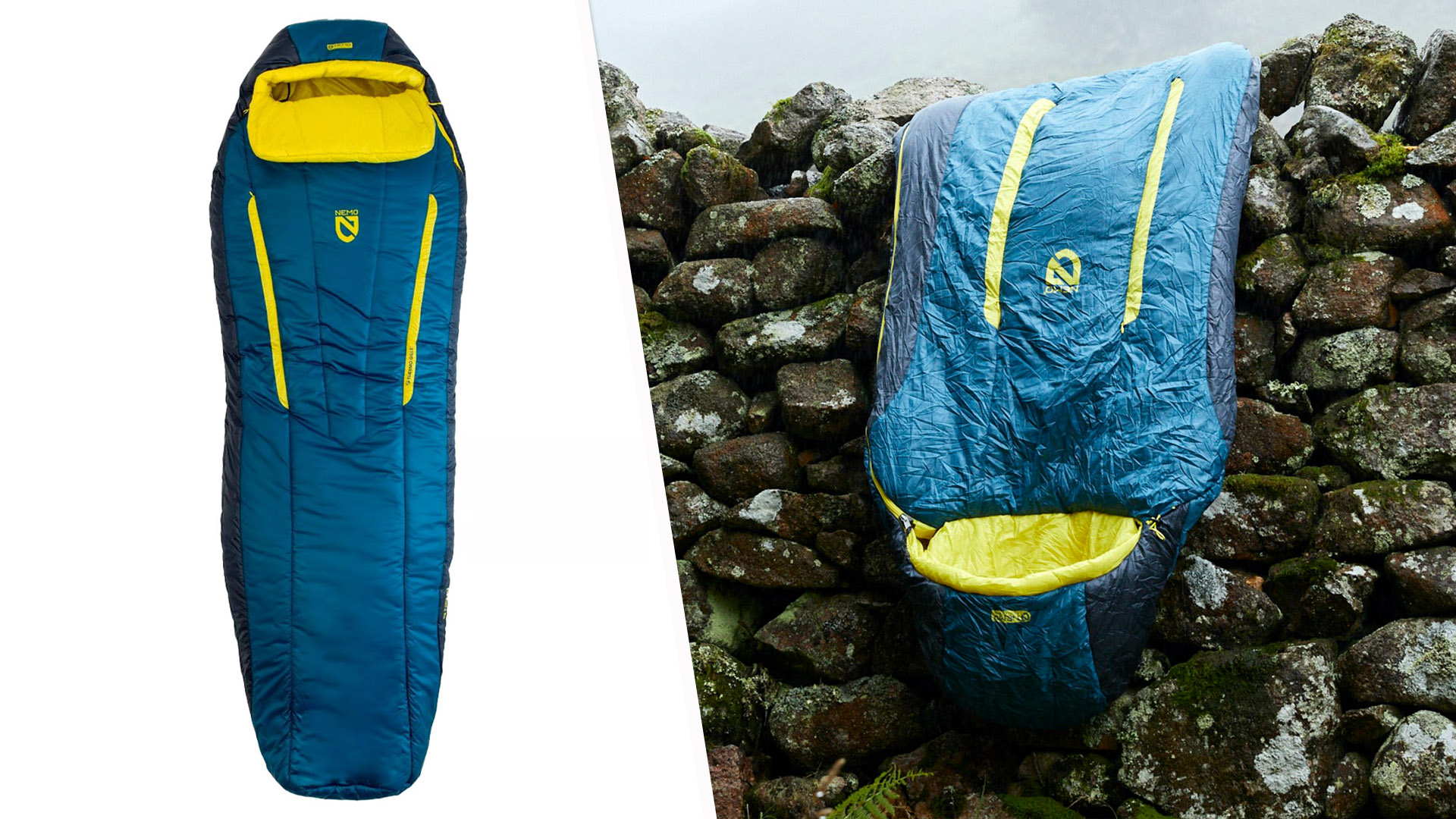
Price: £220
Weight: 1600g
Key attributes: unique design details, excellent sustainability credentials
Temperature rating: comfort rating: 7C / comfort limit: -6C
Length: 202cm
Fill type: synthetic
Unlike most technical sleeping bags, which tend to be mummy-shaped, the Forte employs an unusual spoon shape which flares at the elbows and knees. This extra room is designed to allow side sleepers to shift positions comfortably throughout the night and the result, we found, made for a sleeping bag that felt voluminous, with loads of wiggle room.
It’s available in men’s and women’s versions, in both regular or long lengths, and two temperature ratings too. All the bags are stuffed with warm but hard-wearing Primaloft RISE synthetic fill encased in a ripstop shell and a soft Taffeta lining. The fill is also made from 80% post-consumer recycled polyester.
The Forte 20 is rated with an ISO lower limit of 20°F or -6°C. We found that it was a little chilly when temperatures got below freezing and, as such, some early spring and late autumn nights will stretch this bag. For general three-season use, however, it’s ideal and certainly a good choice for anyone who is conscious of their eco footprint.
Full Specifications
Men’s and women’s fits / regular and long lengths / two temperature rating options / Primaloft RISE synthetic fill (80% recycled polyester) / ripstop shell / taffeta lining / ISO lower limit of 20°F or -6°C / pack size: 29 x 23cm / bluesign system partner company / zero waste manufacturing / off-set carbon footprint / full-length two-way zipper / full-length draught tube / external draught collar / water resistant footbox / integrated pillow pocket / two zipped vents.
Check out our full NEMO Forte sleeping bag review.
Buy the Nemo Forte 20: £220 at Ellis-brigham.co.uk
4. Snugpak Softie 6
Best if you want the wet weather performance of a synthetic sleeping bag
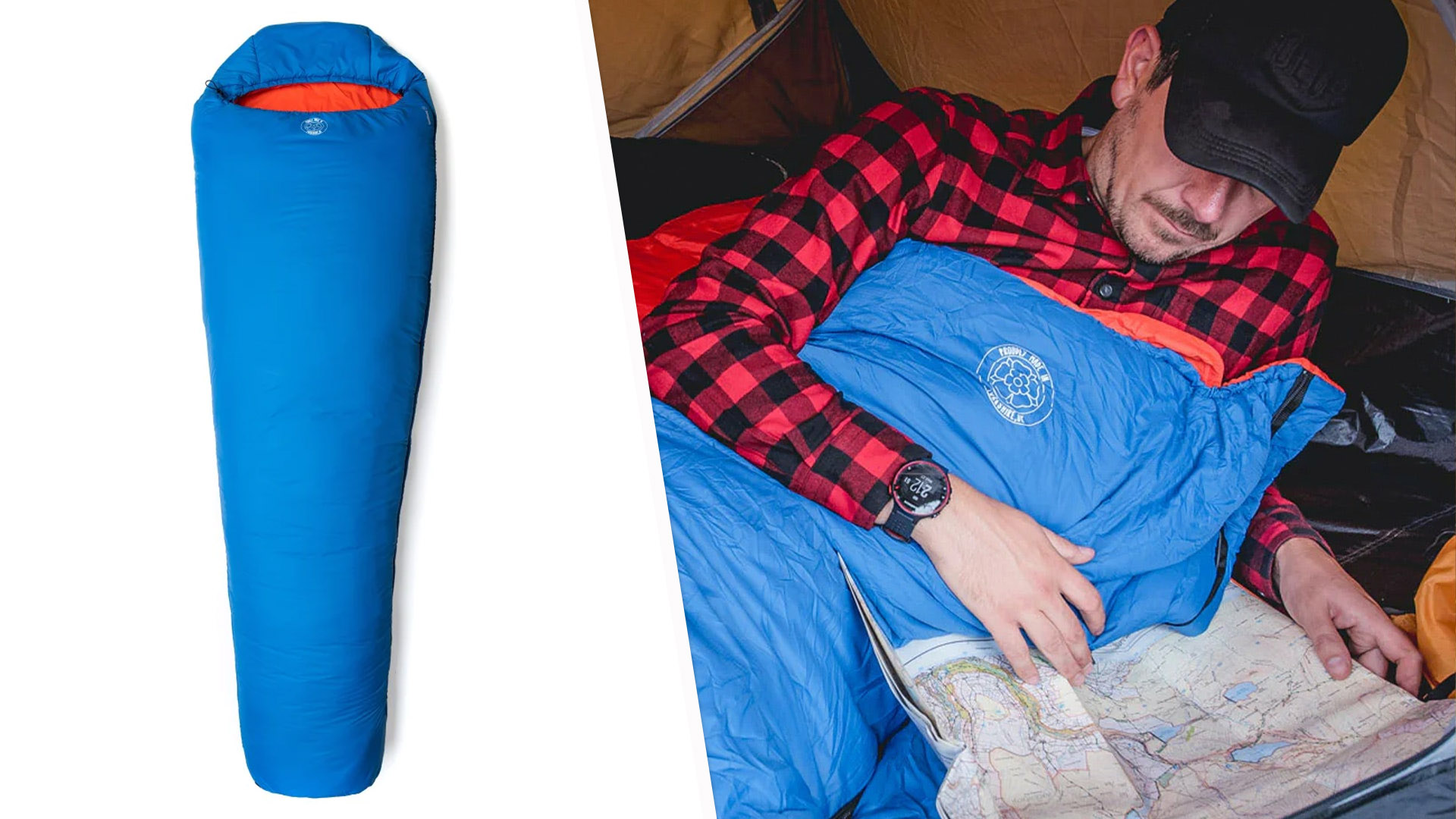
Price: £150
Weight: 1200g
Key attributes: warm when wet, durable, UK-made
Temperature rating: comfort rating: 0, comfort limit: -5C
Fill type: synthetic
It’s hard to believe this sleeping bag isn’t filled with down because it’s so unbelievably lofty and snug and it’s packable and light too. Snugpak isn’t that well-known a brand beyond the core outdoor scene in the UK, but they make some excellent products worthy of greater recognition. We’ve long been big fans of their Softie insulation here at Outdoors Magic. And that’s wherever it’s applied, be that in their jackets or in the sleeping bags. First developed in the 1980s, and much-loved by those in the military, it’s been refined more and more over the years and today you can expect it to provide excellent warmth to weight, even in wet conditions.
Snugpak make a bunch of Softie sleeping bags to suit a wide range of temperatures. This, the Softie 6, is probably the best for three-season versatility, offering a comfort rating of 0°C / 32°F and a limit of -5°C / 23°F. Useful details include an elasticated drawcord hood, a two-way anti-snag zip (useful for night time ventilation), inner baffles to block out draughts and there are compression straps on the stuff sack. One final nice touch is that there’s potential to sync this with another Snugpak sleeping bag to create a big shareable bag. Again, from our experience using this it is another sleeping bag that can be stretched on very cold nights during early spring and late autumn. If you want something for very chilly nights, it’s worth looking at the Snugpak Softie 9 or 10 models.
Full Specifications
Available in standard and extra long lengths / Face fabric: 100% nylon / Inner fabric: 100% nylon / Fill: 100% polyester / two-way YKK zip / Packsize: 19cm x 18cm / 7″ x 7″ / Temperature Rating Comfort: 0°C / 32°F / Temperature Rating Low: -5°C / 23°F.
Buy the Snugpak Softie 6: £155 at Alpinetrek.co.uk
5. Montbell Seamless Down Hugger
Our top pick if you’re looking for something that’s light enough for ultralight hiking and fastpacking

Price: From €359
Weight: 541g
Key attributes: Exceptionally lightweight, totally windproof
Temperature rating: comfort rating: 4C, comfort limit: -1C
Length: 170cm
Fill type: down
Designed for three-season use and weighing just 541g, this sleeping bag should really appeal to those who are after that perfect warmth-to-weight ratio where the right balance is struck between comfort in the day, thanks to a low weight to carry, and comfort during the night. We’ve used this extensively on numerous fastpacking trips and consider it a go-to option if you want something warm but lightweight.
With this model, there are no chambers and there’s no stitching (hence the seamless in the name), with the down instead prevented from moving around too much within the walls of the bag by a unique ‘Spider Baffle System’. This is essentially a web-like layer that traps down feathers, ensuring that the fill is never able to fully migrate from one area of the sleeping bag. It seems to work well.
On top of all that (quite literally), Montbell has used Gore’s Infinium fabric for the shell. This is basically the next gen version of their Windstopper fabric. It’s super lightweight, highly water resistant (but not waterproof), totally windproof and has a lovely bit of stretch to it. It’s top grade stuff that you only really see in the best of sleeping bags out there.
The bag has a fill power of no less than 900. That basically means super high loft and thermal efficiency. The comfort rating is 4℃ and the lower limit is -1℃ and, from our experience, this won’t be warm enough for every single night through early spring and late autumn – not in Britain anyway – but for the milder days in those seasons it’ll be fine. One final thing to bear in mind is that this sleeping bag isn’t great for tall people (length is 170cm) It was fine for our 5 foot 10 tester though.
Full Specifications
Face fabric: Gore-Tex Infinium Windstopper 13d Ballistic Airlight nylon ripstop / lining: 7d Ballistic Airlight nylon / insulation: 900 fill power down / comfort rating 4ºC / limit rating -1ºC / pack size: 28 x 14cm.
Read our full Montbell Seamless Down Hugger review.
Buy the Montbell Seamless Down Huger: £252 at Outsidersstore.com
6. Nemo Disco Endless Promise 15F
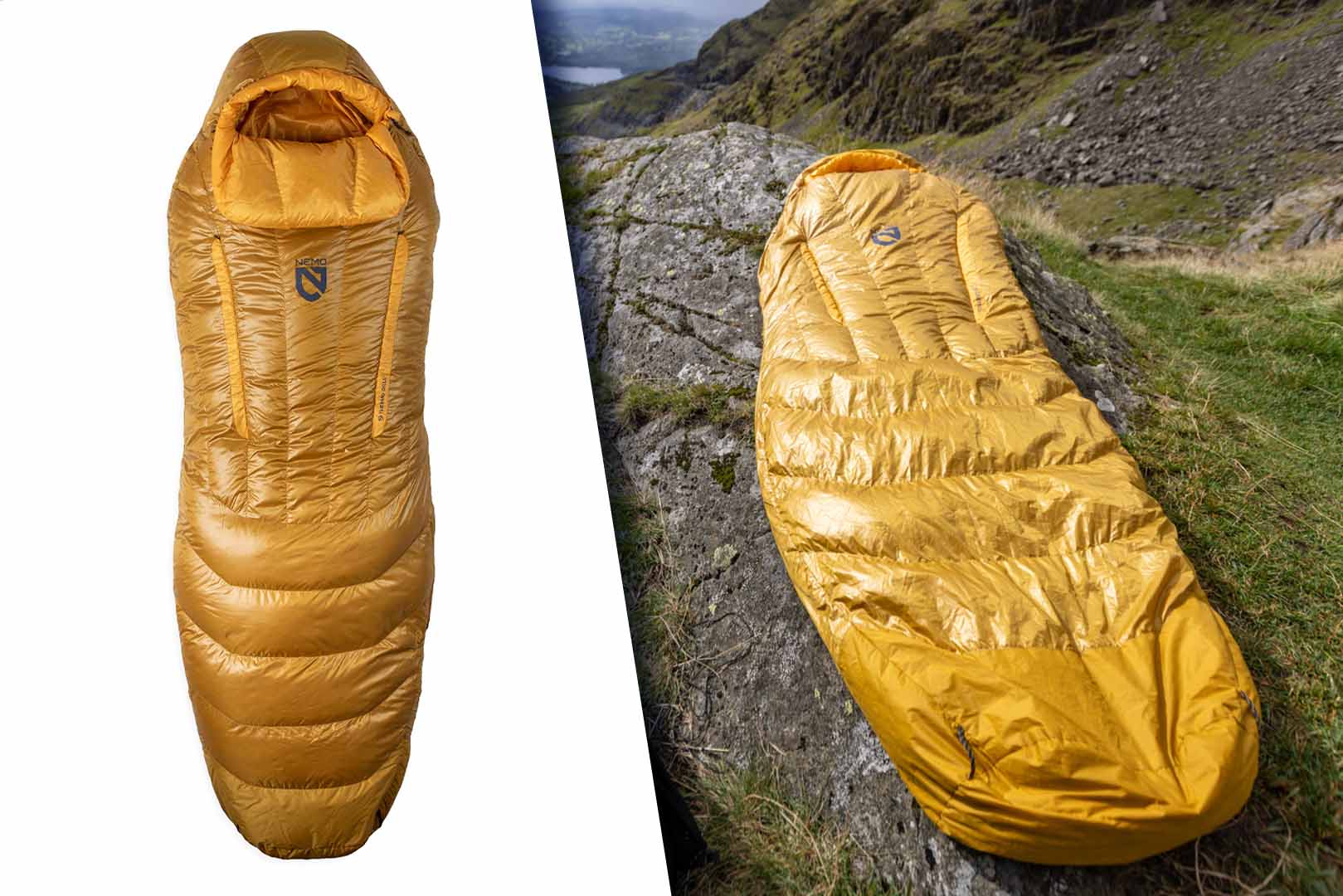
Price: £340
Weight: 1257g
Key attributes: very lofty and snug, excellent eco credentials
Temperature rating: comfort: -3C, limit: -9C
Length: 183cm and 198cm
Fill type: down
This is a luxuriously lofty down sleeping bag that makes for a very comfortable night’s sleep in temperatures as low as -3C. It also has some excellent eco credentials, because, like the Nemo Forte which is also in this list, it is designed for circularity, with repairability and recyclability all factored into the design thinking and recycled materials already used.
This is also a sleeping bag that’s specially designed for side sleepers, with extra room at the knees and at the elbows while narrowing at the feet and lower torso. This gives wiggle room where it’s needed while also ensuring that the overall weight is still light – 1.3kg to be precise.
You can also expect little zipped vents at the torso that can be opened up when you want to dump heat and they’re covered by a very thin layer of fabric that lets warm air escape will keeping out draughts. A two-way zip also gives a venting option down at the base of the sleeping bag.
Full Specifications
Fill Power: 650 / hydrophobic treated / 30D nylon ripstop fabric / traceable responsibly sourced down / Comfort: 27°F | -3°C / Limit: 16°F | -9°C.
Read our full Nemo Disco 15 review.
Buy the Nemo Disco 15: £340 at Ellis-brigham.co.uk
7. Forclaz MT500 -5C
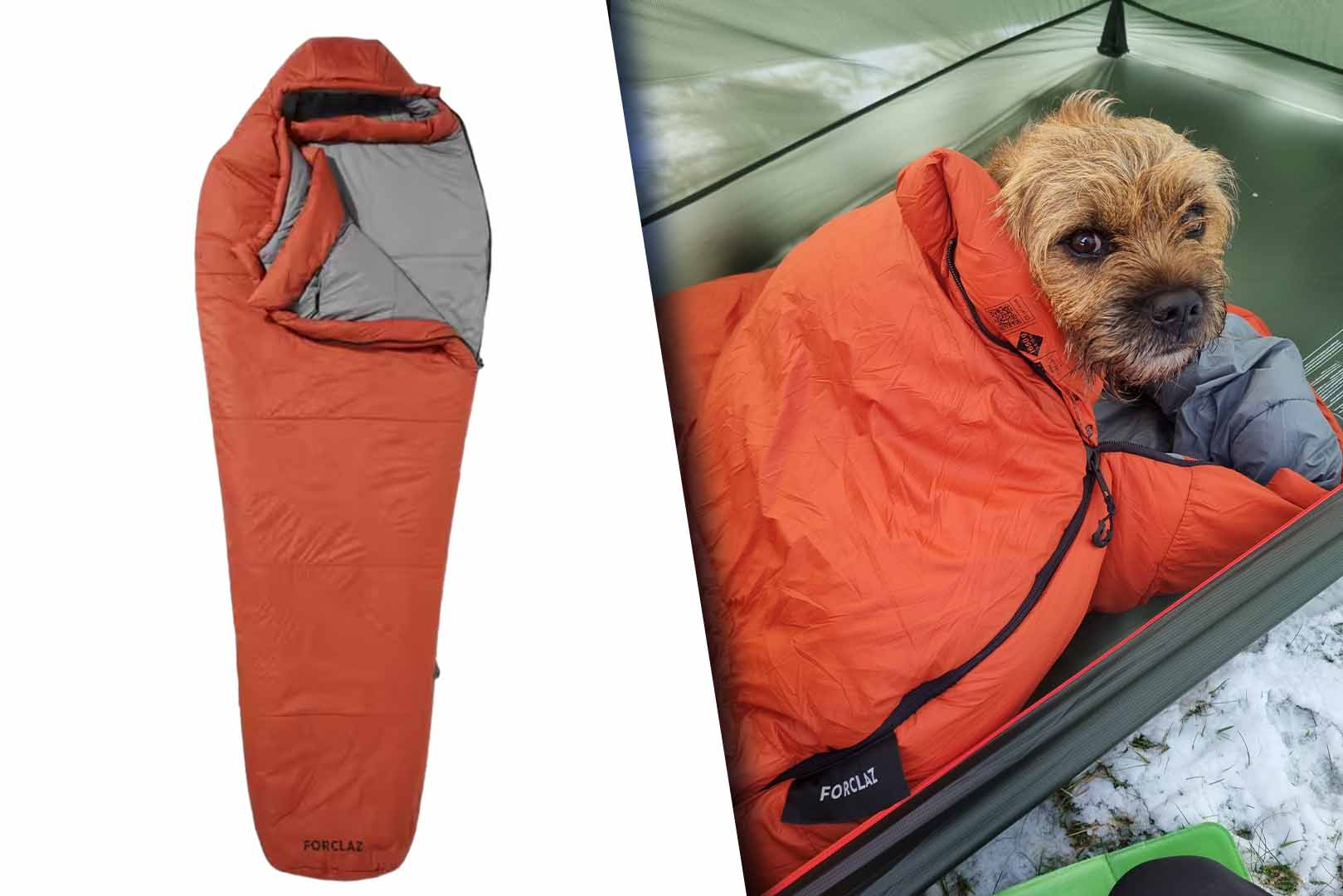
Price: £90
Weight: 1650g
Key attributes: Good value, useful details, can stretch into winter
Temperature rating: -5C comfort rating, -11C limit
Length: 185cm (Large)
Fill type: Synthetic
While this might be classed as a three-season sleeping bag, it’s very warm for the category. In fact, we’ve found it to be warm enough for a lot of UK winter nights – at least those that don’t drop below -5C. As such, we’d say this is a three-season sleeping bag with enough insulation to keep you warm at the shoulders of spring and autumn and on the more forgiving winter nights. In our tests, we found this had a lot of the features we look for from a sleeping bag, including an internal draught baffle, zippers that are easy to locate and that glide nicely, a phone or head torch pocket and a two-way zip that lets you open up the bag at the legs when you want a bit of ventilation.
The synthetic fill isn’t particularly lofty and light feeling and it instead feels thick and flat. It still brings a good deal of warmth without cold spots though, and we felt confident that it could resist any moisture from condensation in our tent.
At 1650g, it’s quite a heavy sleeping bag and, while you can easily compress it down to fit into the base of a backpack, it is on the cumbersome side. Still, what you get is pretty good for the price. There are certainly warmer and lighter three-to-four season bags out there, but they will cost a heck of a lot more than £90.
Full Specifications
Available in M, L and XL / Face fabric: polyester / lining: polyester / insulation: synthetic (polyester) / comfort rating: -5C / limit rating: -11C / pack size: 16L.
Buy the Forclaz MT500: £90 at Decathlon.co.uk
8. Therm-a-rest Questar 0F/-18C
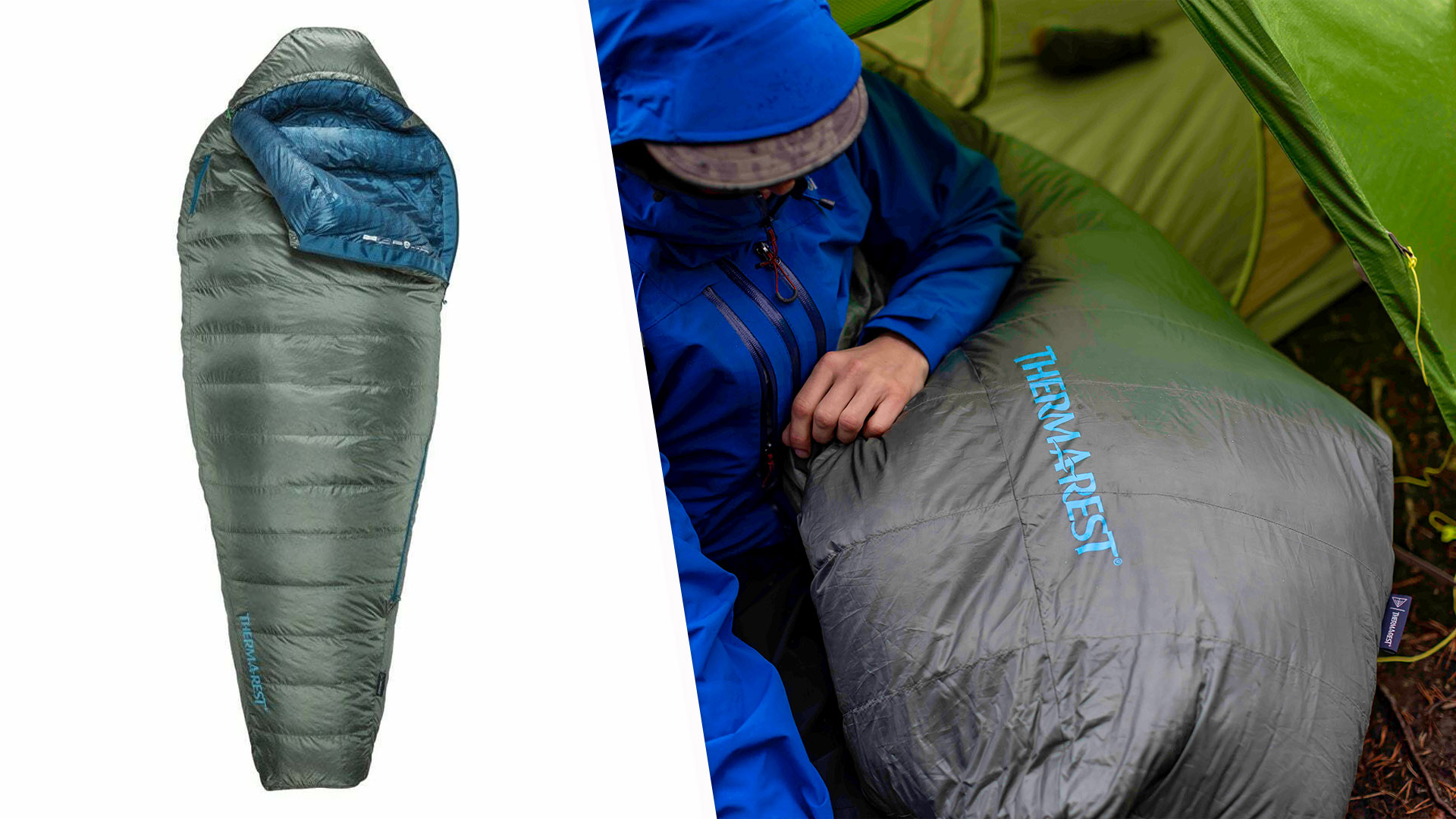
Price: £380
Weight: 1.21kg
Key attributes: excellent warmth-to-weight, neat design details, wide cut
Temperature rating: comfort rating: -10ºC comfort limit: -18ºC
Length: 185, 203 or 215cm
Fill type: down
This is a very cosy sleeping bag with excellent loft. We found that it can stretch into winter well but its optimum range is from early spring through to late autumn. During our tests with this, we slept in it when temperatures had dipped below freezing and it performed just as we wanted it to, providing a warm night’s sleep with plenty of space to move around too.
There are lighter and warmer sleeping bags out there but they’ll come with big price tags. This, on the other hand, provides an excellent balance between warmth, a low weight and also price. It has some useful details and clever innovations too, including a fit that’s designed for all kinds of sleeping positions and two straps for attaching a sleeping mat. There’s also a brilliantly-designed zipper that prevents the fabric from snagging.
Full Specifications
Available in different sizes and temperature ratings / comfort rating: -10ºC comfort limit: -18ºC / length: 73 inches, 80 inches or 85 inches / fill: 650 fill power RDS duck down with Nikwax hydrophobic treatment / shell” 20D Polyester / liner: 20D Polyester Taffeta.
Check out our full Therm-a-rest Questar 0F/-18C review.
Buy the Therm-a-rest Questar 0F: £250 at Valleyandpeak.co.uk
9. Rab Neutrino Pro 400
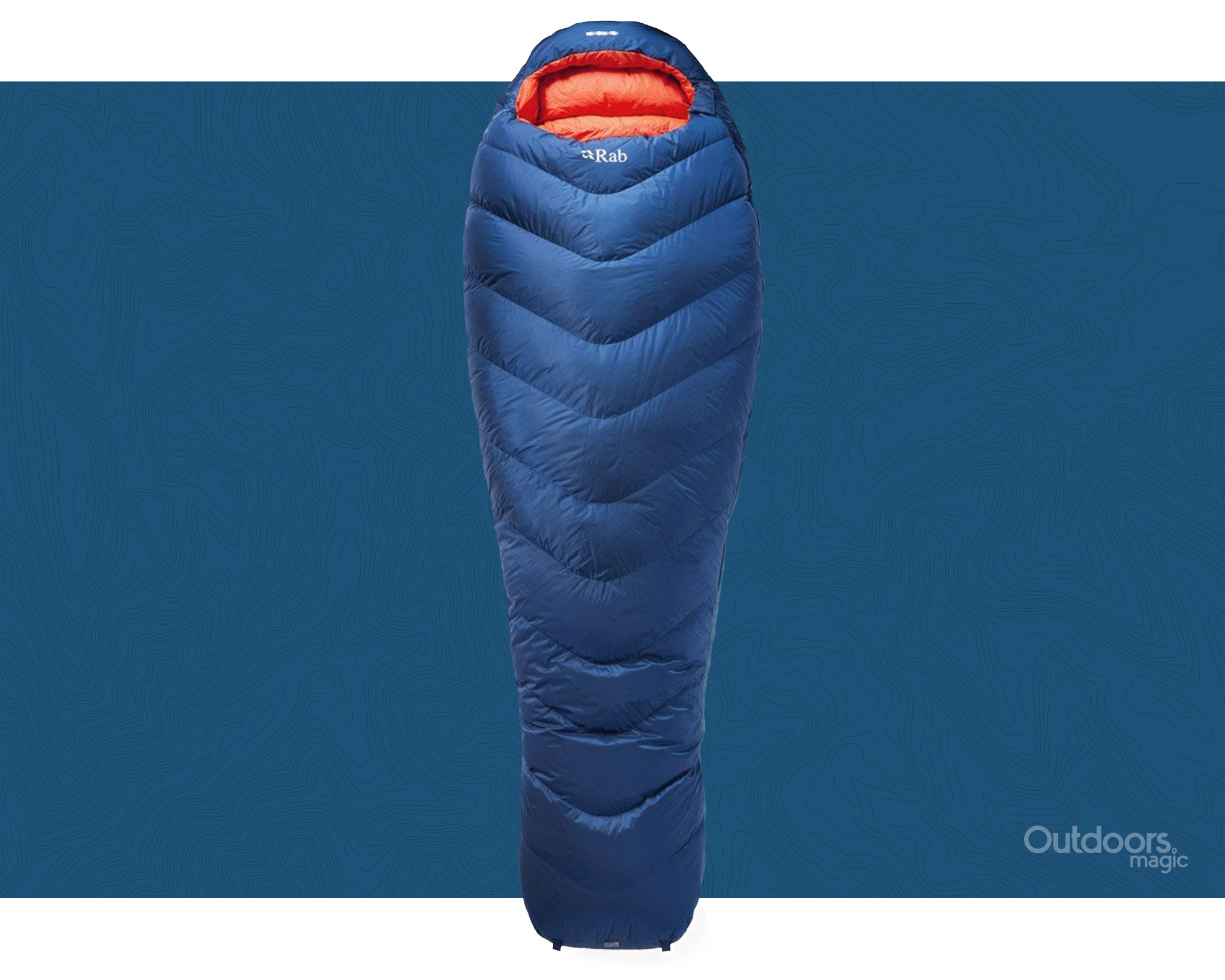
Price: £420
Weight: 775g
Key attributes: High quality design, 800 fill power, durable face fabric
Temperature rating: comfort rating: -1ºC, comfort limit: -7ºC
Length: 160cm to 190cm
Fill type: down
Rab is a company with a great heritage in sleeping bags, and the Rab Neutrino Pro 400 is a well-proven down three-season sleeping bag. It offers a good balance between warmth and weight. The overall design and construction is of extremely high quality. The fill, meanwhile, is comprised of 800FP responsibly-sourced goose down with a Nikwax water-repellent coating. Like other Rab bags, it uses a Pertex Quantum Pro face fabric to provide durability, breathability and added water resistance. The mummy style cut incorporates a well-designed foot box and a snug hood. On test we did find the hood drawcords a little confusing to operate. Overall, however, this is a warm and cosy sleeping bag for varied conditions throughout the UK and beyond.
Full Specifications
Face fabric: 20d Pertex Quantum Pro 100% nylon / lining: 20d 100% ripstop nylon / insulation: 800 fill power goose down / comfort rating -1ºC / limit rating -7ºC / extreme rating -25ºC / pack size: 18 x 27cm.
Buy the Rab Neutrino Pro 400: £420 at Ellis-brigham.co.uk
10. Mountain Equipment Firelite
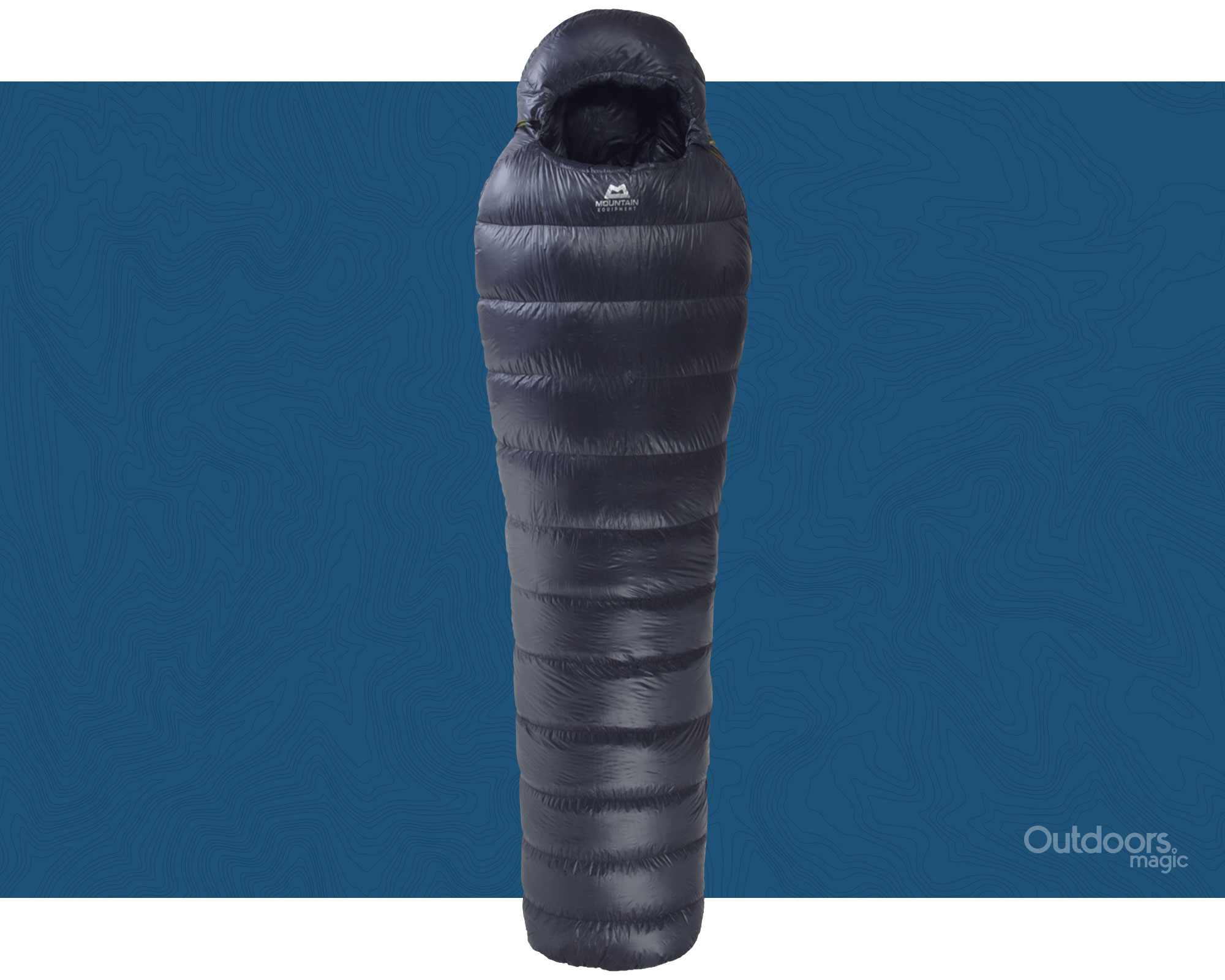
Price: £510
Weight: 770g
Key attributes: 800 fill power, impressive warmth-to-weight, good features
Temperature rating: comfort rating: -2ºC comfort limit: -8C
Length: 185cm
Fill type: down
The Firelite is an ultralight down sleeping bag designed for backpacking and alpinism. It uses high-quality, responsible-sourced 800FP goose down, which means it offers excellent warmth for weight while remaining very compressible. The bag’s comfort rating is 0ºC with a limit rating of -6ºC, but it is a warm bag, and Mountain Equipment’s own ‘Good Night’s Sleep’ rating puts it at -9ºC, which we’d say is accurate. The snug ‘Alpine Fit’ is space-efficient, minimising cold spots, while the construction utilises a ten denier Plasma face fabric that is lightweight and very breathable. The lining is made of the same material and feels very soft against the skin. The zip comes high up around the face, and a single drawcord pulls in around the head effortlessly.
Once you’re in, you feel cocooned against the world – in part because of the innovative elasticated baffles that eliminate dead space. Clever stuff. There’s no denying that the price is high, but it is commensurate with the quality. This is an excellent three-season sleeping bag from one of the best manufacturers in the business.
Full Specifications
Face fabric: 10d plasma 100% nylon / lining: 10d plasma 100% nylon / insulation: 800 fill power goose down / comfort rating 0ºC / limit rating -6ºC / extreme rating -24ºC / pack size: 21 x 25cm.
Buy the Mountain Equipment Firelite: £375 at Alpinetrek.co.uk
11. Gruezi Biopod DownWool Ice 185
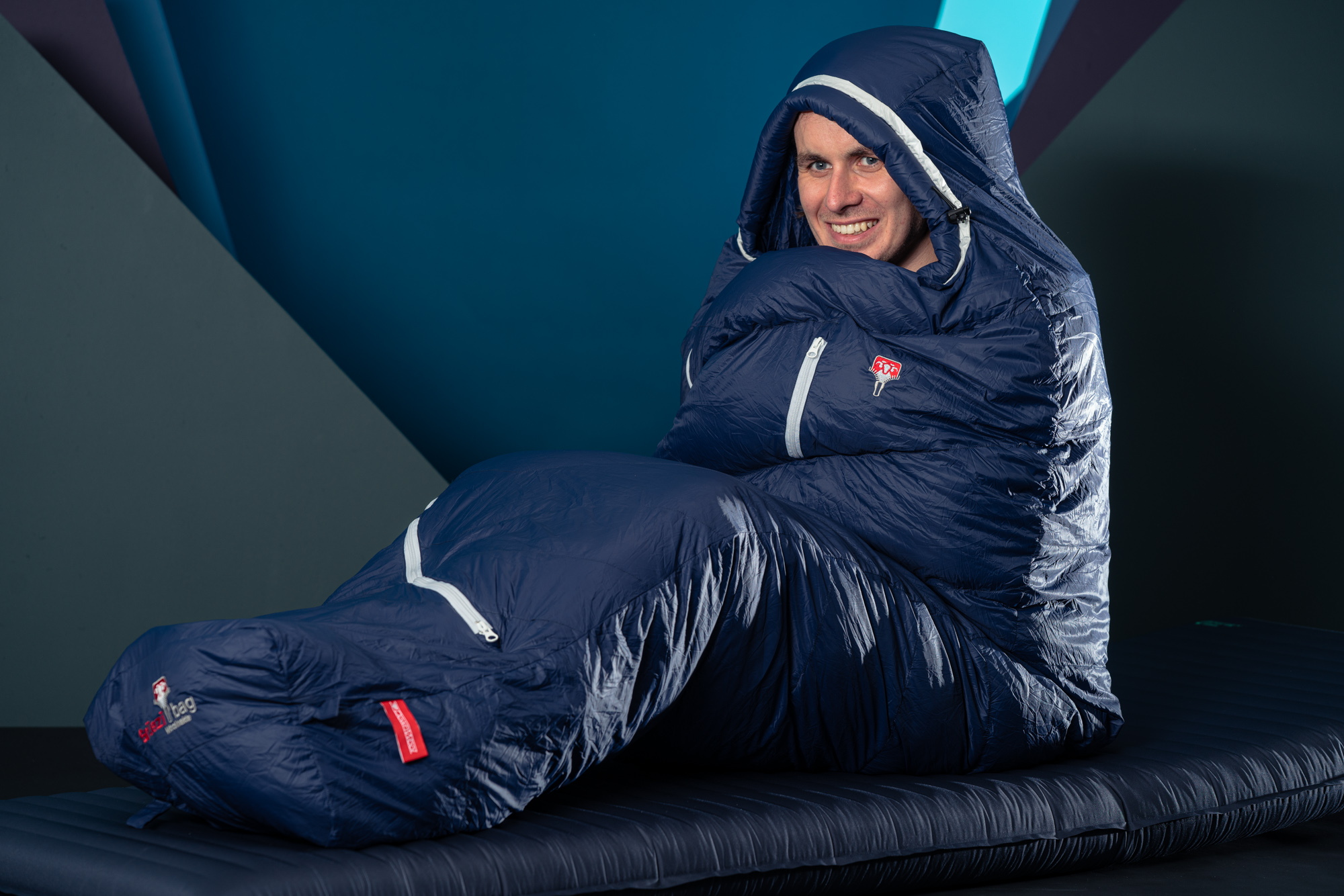
Price: £369
Weight: 1400g
Key attributes: Innovative technology, effective in damp conditions
Temperature rating: comfort rating: 2C, comfort limit: -4C
Length: 176 to 190cm
Fill type: down and wool
Uniquely blending 70% duck down and 30% wool, the idea behind Gruezi’s fill is that it solves the moisture problem that fully down filled sleeping bags have (while also offering a natural alternative to the fully synthetic options out there).
Even condensation in a tent can drastically reduce the effectiveness of a down sleeping bag when it comes to insulation. The main solution to this in the past few years has been to add a hydrophobic treatment from the likes of Nikwax. This, however, doesn’t permanently solve the problem. It needs to be reapplied and reapplied. Gruezi’s idea is that by adding wool to the down, it not only brings extra warmth but it also helps to draw moisture away from it, like some kind of natural dehumidifier.
Contained within a nylon outer and inner lining with v-shaped baffles, the DownWool mix really does just feel like normal down. There’s certainly none of that itchiness we often associate with wool products and, at 1,400g, the warmth-to-weight ratio of the Biopod DownWool Ice 185 is decent too.
OK, it’s not the lightest sleeping bag out there but it’s still worth considering due to the unique cosiness, warmth and moisture resistance that the wool content provides.
Full Specifications
Face fabric: 100% polyamide / lining: 100% polyamide / insulation: 70% duck down and 30% wool / comfort rating -1ºC / limit rating -8ºC / extreme rating -26ºC / pack size: 23 x 25cm.
Read our full Gruezi Biopod Downwool Ice 185 review.
Buy the Gruezi Biopod Downwool Ice 185: £333 at Alpinetrek.co.uk

